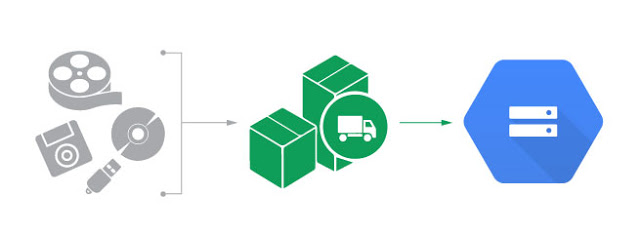Back in 2013, Google started a preview of a new service that let developers ship their hard drives to Google for import into its Cloud Storage service. Today, it’s expanding this service and giving it a new name: Offline Media Import/Export.
Using this service, developers will be able to send their physical media, including hard disk drives, tapes and USB flash drives to its partners — and those partners will then import it into a pre-selected Cloud Storage class (that’s Standard, DRA and Nearline, Google’s new low-cost, high-latency storage service). The previous version only supported hard drives.

Why would you want to ship your disk to Google instead of uploading your data yourself? Google notes that it would take about 100 days to upload a terabyte of data over a typical business DSL line. Chances are you have a faster line if you are in a business that generates this much data, but chances are it’s still faster to FedEx your drive instead of trying to upload all of this data yourself.
Instead of running this service itself, Google is working with Iron Mountain for its North American customers and it looks like the company will soon bring this service to other parts of the world, too.
During the preview period, Google charged businesses an $80 flat fee per disk, regardless of the data size. It’s unclear how much Iron Mountain plans to charge for this service.
It’s also unclear where the “Export” part in “Cloud Storage Import/Export” comes in. As far as I can see, the service is currently only about importing your data into Google’s Cloud. There’s no mention of using the service to have data shipped back to you on Google’s or Iron Mountain’s site.
It’s worth noting that Amazon’s AWS Import/Export has long offered a very similar feature (with a very similar name), too. The company charges $80 per device and $2.49 per data-loading-hour. Amazon also lets you export your data through hard drives. Azure, too, offers pretty much the same functionality under the highly original name of Azure Import/Export.
